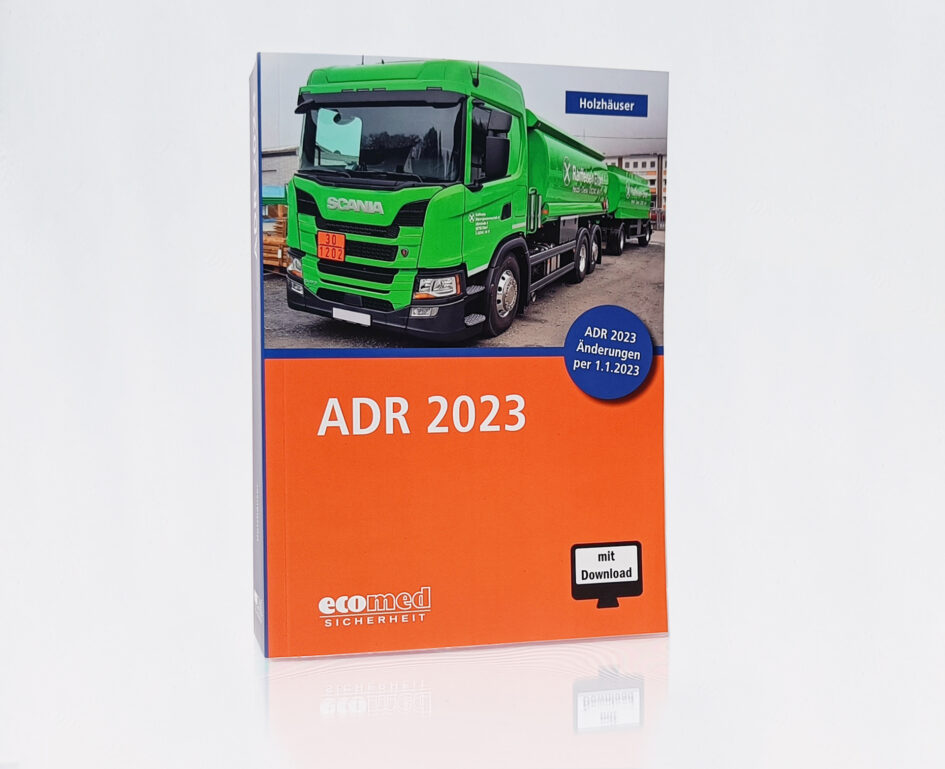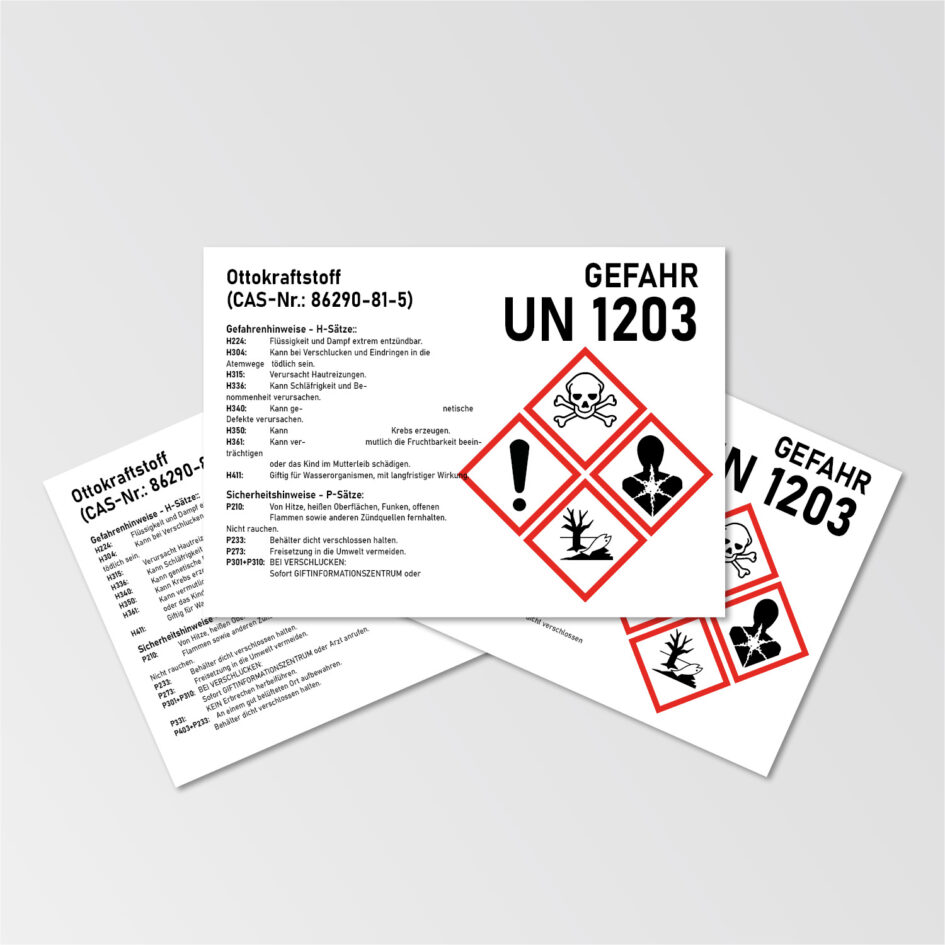Date:
March 21, 2025
Categories:
Company, Industry News, Placards, Tips & Tricks,
In recent years, the internet has evolved from a pure source of information to an indispensable platform for everyday life – especially in the area of e-commerce. The number of online stores is booming like never before and is not only changing consumer behavior, but also the demands and expectations of customers. However, there are not only changes on the provider and customer side, but also from a regulatory perspective. Even when shipping everyday products such as cleaning products, cosmetics or batteries, special safety regulations apply. But what exactly counts as dangerous goods? What mandatory information must be included in online stores? What legal requirements must online stores fulfill in order to ensure the safety of people, animals and the environment when shipping goods? This article aims to provide answers to these questions.
Restrictions & regulations
Anyone who trades in chemical substances and mixtures and markets their products online must package and label them properly before shipping. There are numerous restrictions and regulations to prevent hazards. Even small quantities of hazardous substances can have a very dangerous effect if the strict requirements and measures are not taken into account. The sale of some particularly hazardous chemicals is now banned throughout Europe, while others may only be sold under strict conditions. There are numerous examples that show that it can be life-threatening if the substances are stored or shipped incorrectly.
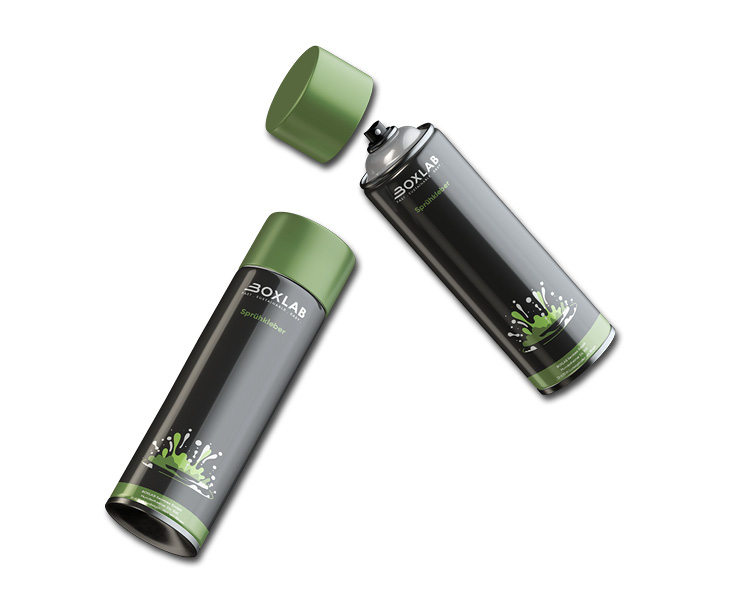
Obwohl wir normalerweise den Einsatz von Sprühkleber vermeiden, gibt es Situationen, in denen selbst die beste Vorbereitung nicht ausreicht. Für diese hartnäckigen Fälle haben wir den BOXLAB Sprühkleber entwickelt, der speziell für die dauerhafte Fixierung von Etiketten auf den schwierigsten Oberflächen konzipiert ist. Ob stark verschmutzte, rostige oder beschädigte Untergründe, extreme Temperaturen oder widrige Witterungsbedingungen – der BOXLAB Sprühkleber sorgt für eine zuverlässige Haftung, wenn andere Methoden versagen.
In order to ensure the protection of the general public, the legal principles of the CLP, ADR, REACH and Chemicals Prohibition Ordinance must be observed. These regulations describe, for example, the correct classification, labeling and packaging of chemicals that are placed on the market.
There are different regulations depending on the transport route.
ADR-, CLP-, REACH- und ChemVerbotsV
ADR - Regulation
The ADR regulation specifies in detail how the transportation of dangerous goods must be carried out safely and in compliance with the law on the roads within the member states – especially in Europe. In this regulation, the 9 hazard classes are described in detail, packaging regulations are regulated and transport and vehicle regulations are described. It also explains how labeling must be carried out. Information on documentation and training is also provided.
CLP – Regulation
The main content of the CLP Regulation relates to the classification of chemical substances and mixtures, which are classified according to their hazard characteristics (e.g. dangerous for the environment, flammable, etc.). Standardized hazard symbols are used for labelling, as well as substance-specific hazard statements (H-phrases) and precautionary statements (P-phrases). Furthermore, packaging is a very important component that helps to minimize risks during storage and transport.
REACH - Regulation
The REACH regulation affects all companies that classify themselves as manufacturers, importers and users of chemical substances, mixtures and articles within the EU. This regulation is the forerunner of the global chemicals regulation and affects all companies wishing to export to the EU market. One of the most important requirements for companies is the provision of safety data sheets to the customer. The compilation can be found in Regulation (EC) No. 1907/2006 (REACH) with relevant information. The advantages of this regulation (apart from the protection of humans, animals and the environment) include the transparency and traceability of the supply chain and the promotion of innovation, which is intended to encourage the development of alternatives to hazardous chemical substances.

Alle GHS Etikett sind im Standardformat 50x50mm und sind seewasserbeständig gemäß BS 5609 Sektion III. GHS Etikett von BOXLAB Services haben standardmäßig eine schwarze Konturlinie und liegen qualitativ über ADR-Anforderungen. Mit jeder Aktualisierung des ADR prüfen wir unsere GHS Etikett auf ihre Gültigkeit, so erhalten Sie stets die neusten und aktuellsten Layouts und Spezifikationen.
Chemicals Prohibition Ordinance (ChemVerbotsV)
The Chemicals Prohibition Ordinance (ChemVerbotsV) sets guidelines such as the REACH and CLP regulations. The aim is to restrict or prohibit the placing on the market, supply and use of hazardous substances and mixtures in order to minimize risks. In addition to manufacturers, distributors and retailers, those affected also include commercial users and private individuals who handle hazardous chemicals. The substances and mixtures concerned include, for example, pesticides, CMR substances (carcinogenic, mutagenic and/or reprotoxic) or highly corrosive chemicals.
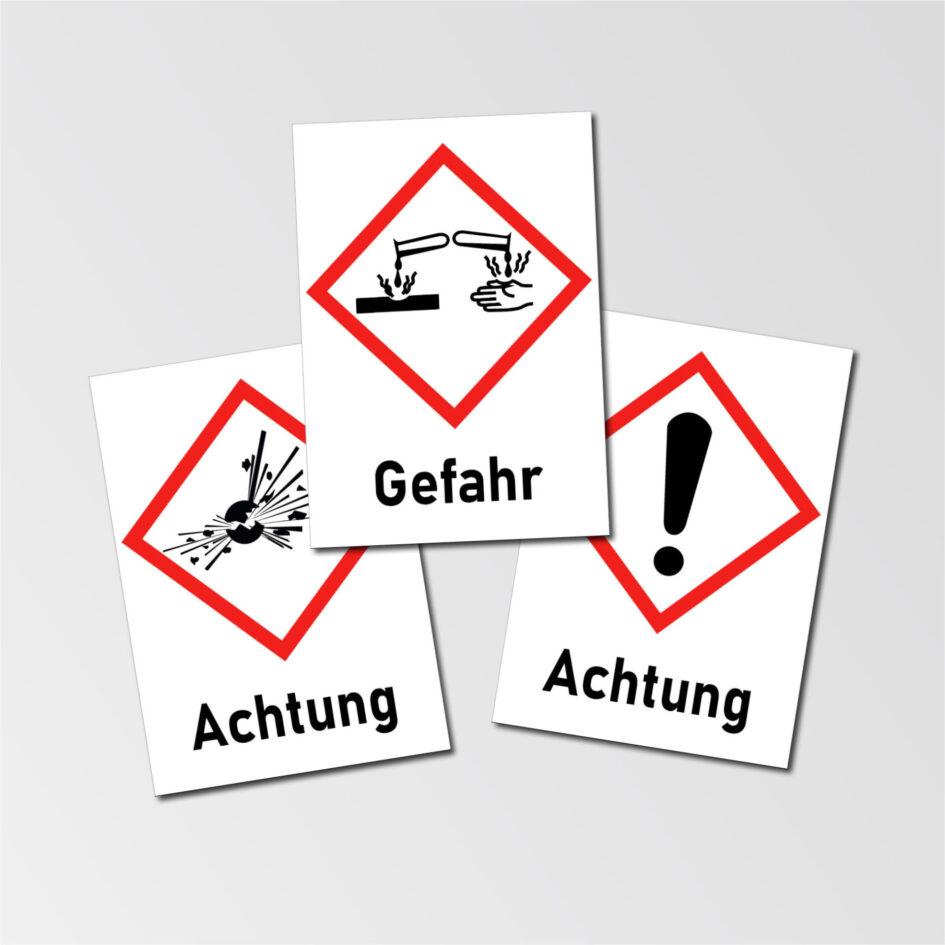
Gefahrstoffetikett "GHS Etikett" gemäß CLP, REACH Unsere GHS-Etiketten entsprechen den internationalen Standards des CLP und REACH und bieten eine zuverlässige Kennzeichnung für den sicheren Transport von Gefahrstoff. Jedes Etikett ist im neuen Standardformat von 105x74mm erhältlich und enthält ein Signalwort, das die Gefahr deutlich kennzeichnet.
The difference to the other regulations is that it specifically regulates the sale and distribution of substances within Germany and also defines the distribution area and the expertise requirement. This means that online retailers must ensure that only authorized persons can purchase the products. Apart from this, strict documentation and consultation obligations apply to ensure safe handling.
It is well known that violations can result in fines and criminal prosecution...
Clarity for sellers and buyers
General product labeling obligation
The exact product description, comprehensible information about the product, such as name, type, material composition or ingredients, quantity, price, size and weight.
Safety data sheets
A particularly important obligation of online store operators, which unfortunately many fail to take into account, is the provision of safety data sheets for customers. These must be visible to the customer during the shopping process or, at the latest, customers must receive them by the time of delivery.
Labeling
The labeling of UN numbers, hazard classes, hazard statements and pictograms for hazards should be indicated.
Products that contain a hazardous composition must be labeled in accordance with the CLP Regulation:
Hazard pictograms: Symbols indicate physical hazards (e.g. highly flammable, explosive), health hazards (e.g. toxic, corrosive) and environmental hazards
Hazard statements (H-phrases): Description of the specific hazards
Precautionary statements (P-phrases): are the information for safe handling and storage of the product Manufacturer’s information: Contact information of the manufacturer or importer
Ingredients
Detailed description of the substances contained and the composition of the product (ingredients including quantities)
CE marking
The CE marking indicates that a product complies with European safety, health and environmental protection requirements.
Negative example
One example of a B2C sector in which there are many smaller online stores on the market but where it is clear that many operators do not comply with the regulations, or do not comply with them in full, is online nail design stores. The reasons for non-compliance can be many and varied.
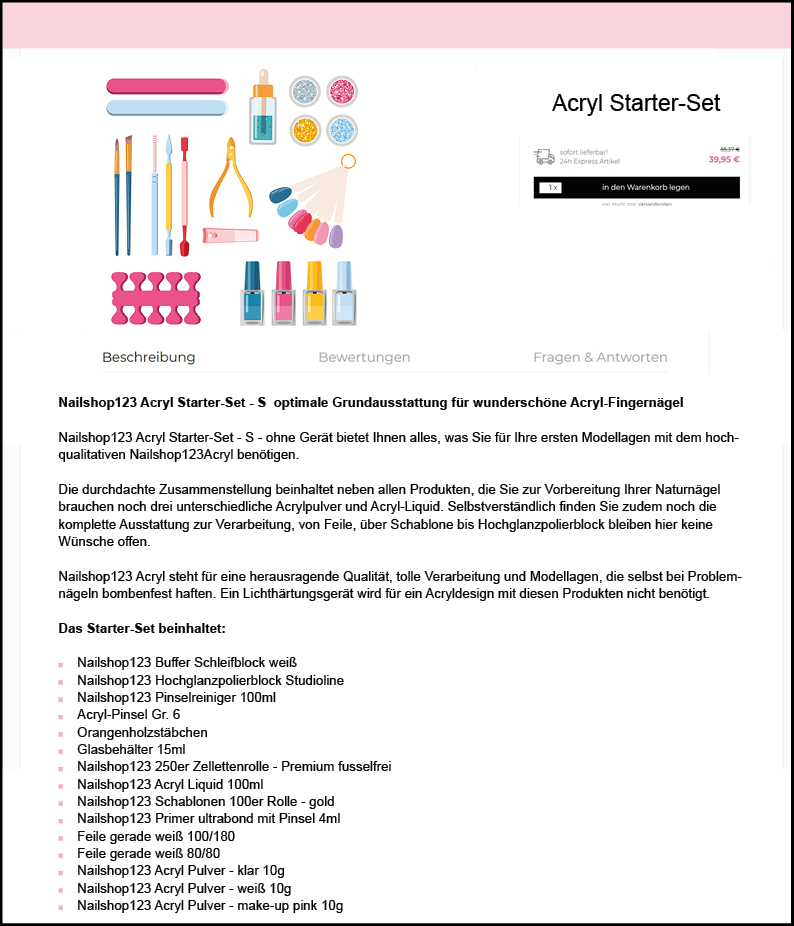
Here is an example of the lack of information on ingredients. Furthermore, it is not clear whether the articles contain GHS symbols. As seen so far, there are many regulations and some room for interpretation. It is therefore difficult to assess in individual cases whether a store is complying 100% with the rules.
Packaging, labeling and shipping
There are different types of packaging for hazardous goods that are made up of different materials. The different forms include cartons, canisters, IBCs and drums. To ensure safe transportation, the products must be properly stored in approved packaging. For shipping within Germany and Europe, the packaging must be leak-proof, resistant and suitable for the specific hazardous goods. Depending on which product is to be shipped, the labeling is provided outside with hazard labels (e.g. class 3 for flammable liquids), UN numbers (classification to identify the hazardous goods) and, if necessary, other markings such as a handling mark (e.g. “Top” or “Caution fragile”). The transport documents must be carried for traceability. These contain information on the UN numbers and the official designation of the substance, hazard class, packaging groups, as well as the sender and recipient data. A safety data sheet is required for the transportation of chemical products. Apart from this, staff should always be trained in accordance with ADR 1.3 and protective equipment and fire extinguishers should be to hand in case of an emergency. Another important point is storage during transportation. Depending on the hazardous substance, it should be ensured that, for example, no acids are stored next to bases.
Our labels and packaging processes
Orange warning signs:
These signs show the UN number and hazard number. Our warning signs have been specially developed for the safe labeling of dangerous goods in accordance with ADR, RID, IATA and IMDG Code
Placards:
The color and number of the hazard label usually indicates the hazardous goods class. We also provide the additional label for heated substances in this format.
Hazard labels:
These labels indicate the hazard classes and subclasses of the actual package.
Technical names:
Provide clear identification of hazardous substances in accordance with the latest IMDG Code 2023 regulations.
Conclusion
In summary, products containing chemical substances must be correctly packaged and clearly labelled to minimize potential risks to the environment and humans. It is crucial to understand and consistently implement the applicable regulations. In online retail in particular, it is important that specific mandatory information is presented clearly and transparently in order to provide customers with comprehensive information and at the same time comply with legal requirements. In addition to correct packaging and labeling, online shop operators must ensure that transport personnel are appropriately trained to react appropriately in an emergency. When shipping or transporting products, it is essential to affix the relevant identification label. As there is often room for interpretation and infringements in practice, particularly in niche areas such as nail design, it is all the more important to take a close look at the applicable regulations and apply them consistently. This is the only way to ensure that chemical products are shipped safely and responsibly.
Contact us today to find out more about our hazardous goods labels and other intralogistics solutions and to arrange a personal appointment.
Our philosophy
At BOXLAB Services, quality, service and customer satisfaction are our top priorities. Despite the economic challenges of inflation, we want to offer our customers high-quality dangerous goods labels such as hazard labels at attractive prices. Visit our website to discover the new prices and benefit from the extended ordering options. We are proud to continue to offer you first-class products and outstanding customer service

